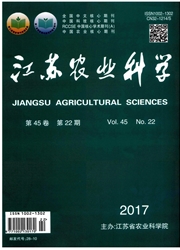

 中文摘要:
中文摘要:
目的建 立和应用血液学课程MICM资源库,提高教学效果.方法 收集临床常见 的各种血液病患者的骨ft和外周血,常规方法制片, Wright染色后显微镜下观察形态学( morphology ,M) , 流式细胞仪方 法检测 细胞免 疫表型 ( immunology, I ) , G 带方法制作细胞遗传 学核型 (cytogenetics, C ),分子生物学方法( molecular biology, M )检测融合基因及基因突变,再将这些标本 和结果制作成血液学MICM电子资源数据库并应用于教学和实习.结果建 立了专门用于教学的 血液学资源库,通过在不同学习阶段的学生中应用,增加了学生学习的积极性和主动性,提高了血 液学教学效果及质量.结论建立和应用血液学 MICM资源库有利于提高血液学教学质量,并对 内科学教学资源平台建设具有借鉴意义.
 英文摘要:
英文摘要:
Objective To construct MICM ( morphology, immunology, cytogenetics, and molecular biology) resource library and improve teaching effectiveness of hematologic diseases. Methods Peripheral blood and bone marrow were obtained from patients with typical hematologic diseases. Cell morphology was determined with Wright stain, and flow cytometry was used to detect immunophenotype of the cells. Karyotype of bone marrow was analyzed by G-banding, and fusion gene transcript was detected by molecular biology technique. All slides, observed and scanned under the electron microscope together with electronic resource, were collected and categorized for MICM resource library. The MICM resource library was then used for teaching of hematologic diseases and clinical practice. Results MICM resource library was successfully constructed and used in the teaching of hematologic diseases, which increased students ^ learning enthusiasm and initiative, and improved the efficiency and quality of teaching. Conclusion Construction and application of MICM resource library can help improve teaching effectiv-eness of hematologic diseases, and may serve as reference for the construction of internal medicine teaching resource platform.
 同期刊论文项目
同期刊论文项目
 同项目期刊论文
同项目期刊论文
 期刊信息
期刊信息
